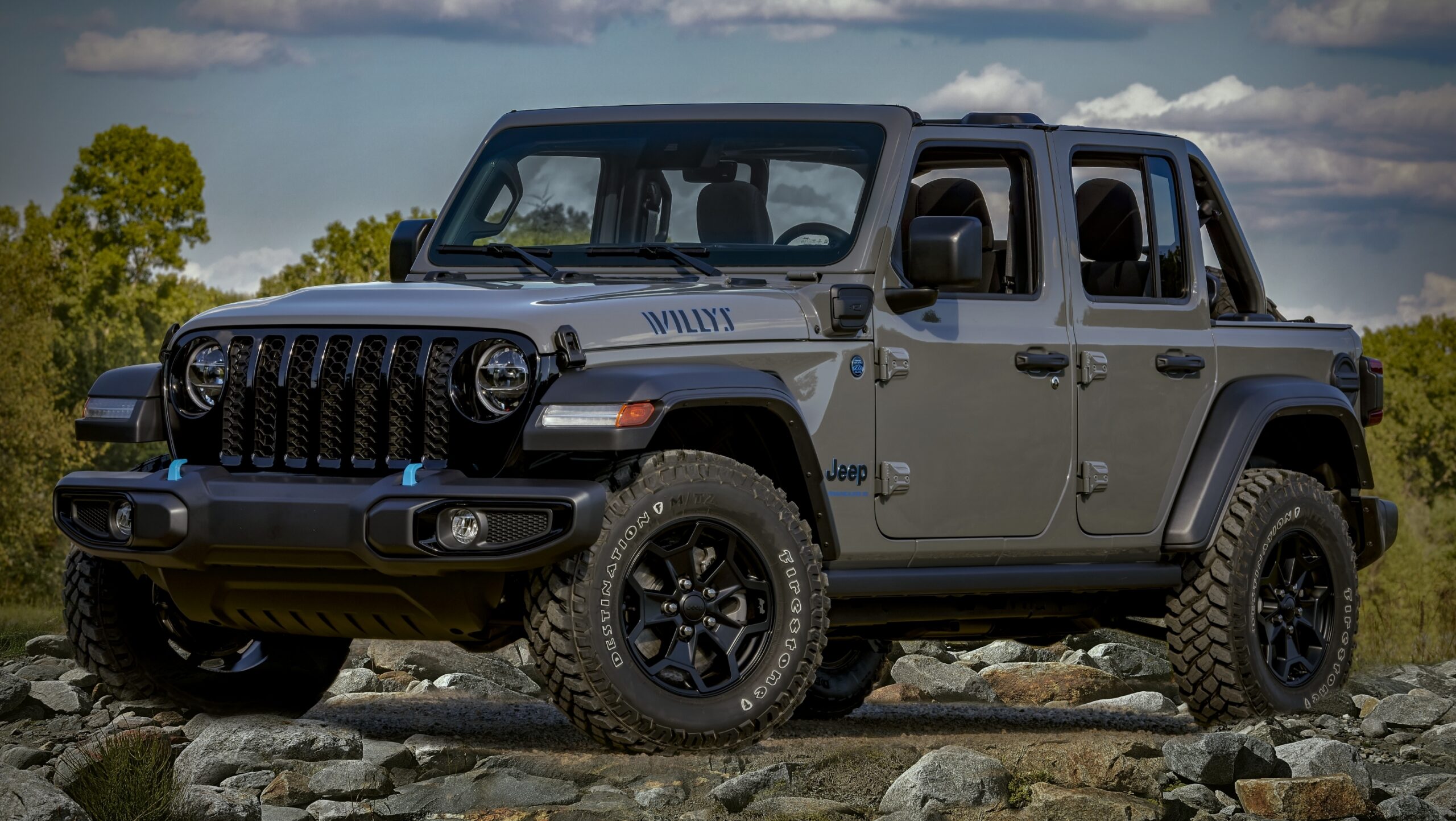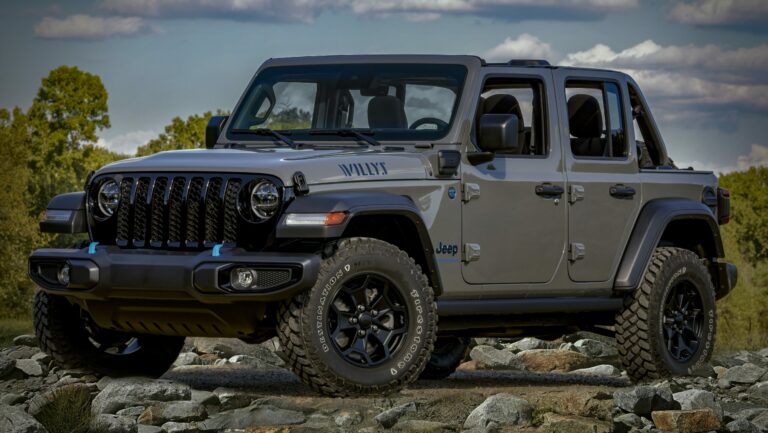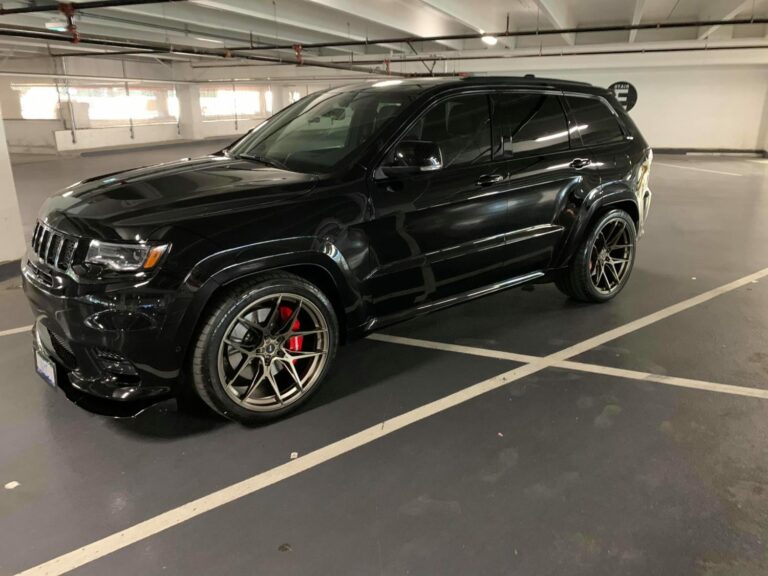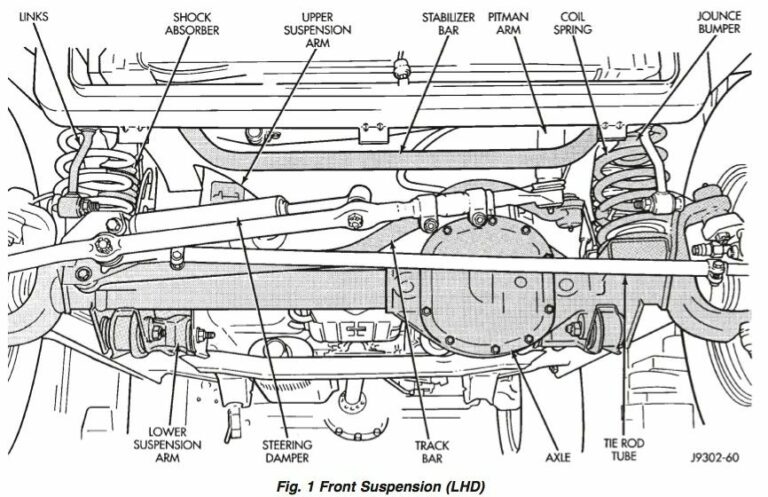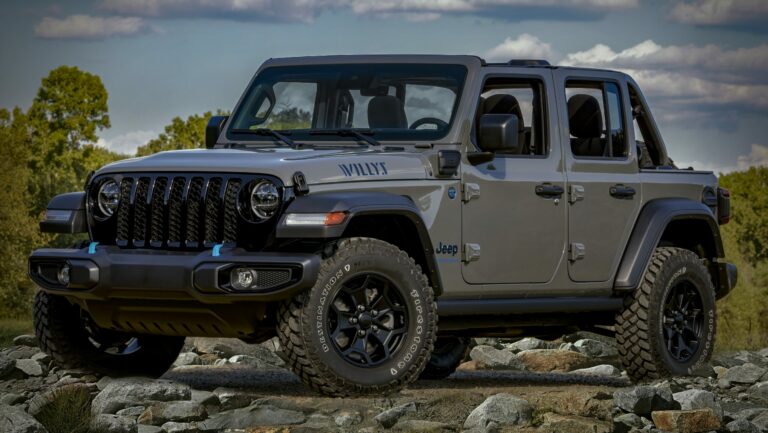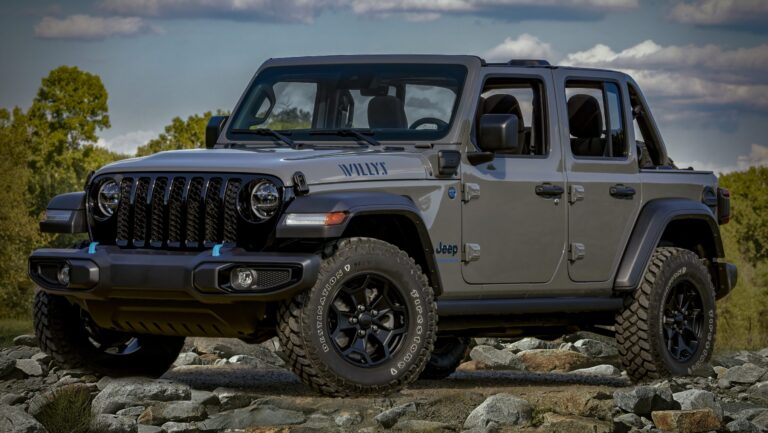Jeep M170 For Sale: A Comprehensive Buyer’s Guide
Jeep M170 For Sale: A Comprehensive Buyer’s Guide jeeps.truckstrend.com
Introduction: The Allure of the Historic Jeep M170 For Sale
For enthusiasts of military history, vintage vehicles, and the iconic Jeep brand, the prospect of finding a Jeep M170 for sale represents a unique opportunity. More than just a utility vehicle, the M170 is a tangible piece of post-war American military history, a specialized variant of the legendary M38A1 (the military version of the CJ-5) designed specifically for a crucial, life-saving role. Often referred to as the "long wheelbase M38A1 ambulance," the M170 served as a front-line stretcher carrier, distinguishing itself with its extended chassis and unique body configuration.
Jeep M170 For Sale: A Comprehensive Buyer’s Guide
Its rarity, historical significance, and robust construction make the Jeep M170 for sale a highly sought-after collectible. Whether you’re a seasoned military vehicle restorer, a history buff looking for a unique showpiece, or simply someone captivated by the rugged charm of vintage Jeeps, understanding what makes the M170 special and how to navigate the market is essential. This comprehensive guide will delve into every aspect of acquiring one of these fascinating machines, from its historical context to practical buying advice and ownership considerations.
I. What is the Jeep M170? A Historical Overview
The Jeep M170 emerged from the Willys Motors production line during the mid-1950s, a direct response to the U.S. Army’s need for a more capable battlefield ambulance than the standard M38A1 could provide. While the M38A1 (produced from 1952-1971) was a versatile utility vehicle, its compact size limited its ability to carry stretchers effectively within the vehicle’s body.
To address this, Willys extended the M38A1’s wheelbase from 81 inches to a substantial 101 inches, creating the M170. This additional length allowed for a larger rear compartment, specifically designed to accommodate two stretchers side-by-side or four seated patients. Key distinguishing features of the M170 include:
- Extended Wheelbase: The most obvious difference, providing the necessary interior space.
- Unique Body: The M170 features a larger, more enclosed rear body, often with a large, hinged rear door for easy stretcher loading.
- Side-Mounted Spare Tire: Unlike the M38A1’s rear-mounted spare, the M170’s spare tire was typically mounted on the passenger side fender to free up the rear opening.
- Rear-Mounted Jerry Cans: Often, two jerry cans for fuel or water were mounted on the rear, flanking the large door.
- Engine: Like the M38A1, it was powered by the durable Willys F4-134 "Hurricane" overhead-valve four-cylinder engine, known for its reliability and torque.
- Transmission: Typically equipped with the T-90 three-speed manual transmission and a two-speed transfer case (Dana 18).
![]()
The M170 saw active service through the Cold War era, including deployments in Vietnam, performing its critical role of transporting wounded soldiers from the front lines to aid stations. Its robust design and off-road capability made it invaluable in challenging terrains.

II. Why Buy a Jeep M170? The Appeal of a Unique Military Vehicle
The decision to seek a Jeep M170 for sale is driven by several compelling factors:
- Rarity and Collectibility: Compared to the standard M38A1, far fewer M170s were produced, making them significantly rarer. This scarcity contributes to their collectibility and potential for appreciation in value.
- Historical Significance: Owning an M170 is owning a piece of military history. These vehicles played a vital, often unsung, role in conflict zones, and preserving one is a way to honor that legacy.
- Unique Design: The M170 stands out from other vintage Jeeps due to its extended body and specific ambulance features. It’s a conversation starter at any car show or historical event.
- Restoration Project Potential: For those who enjoy mechanical challenges, an M170 offers a rewarding restoration project, bringing a piece of history back to life.
- Practicality (for a vintage Jeep): While still a vintage vehicle, the longer wheelbase offers slightly more interior space, making it marginally more practical for certain uses than its shorter brethren.
- Off-Road Capability: Beneath the ambulance body, it’s still a rugged Jeep. With proper maintenance, an M170 can still tackle moderate off-road trails, albeit carefully.

III. Where to Find a Jeep M170 For Sale
Locating a Jeep M170 for sale requires a focused search, as they don’t appear on mainstream used car lots. Here are the primary avenues:
- Specialized Military Vehicle Dealers: A handful of dealers specialize exclusively in vintage military vehicles. They often have M170s in various conditions, from untouched originals to fully restored examples.
- Online Marketplaces & Auction Sites:
- eBay Motors: Occasionally, M170s surface here, often from private sellers.
- Hemmings Motor News: A classic car marketplace that lists vintage military vehicles.
- Bring a Trailer (BaT): High-end auction site that features well-documented, unique vehicles, including rare military Jeeps.
- GovPlanet/IronPlanet: Government surplus auctions sometimes list decommissioned military vehicles, though M170s are less common here now.
- Military Vehicle Forums & Clubs: Online forums (e.g., G503.com, Military Vehicle Preservation Association – MVPA) and local/national clubs are excellent resources. Members often sell vehicles within the community before listing them publicly. Networking here can provide leads on private sales.
- Live Auctions: Specialized classic car and military vehicle auctions can be a source, but be prepared for competitive bidding.
- Word-of-Mouth: Sometimes, the best deals are found through connections within the vintage vehicle community.
IV. What to Look For: Key Inspection Points Before Buying
When considering a Jeep M170 for sale, a thorough inspection is paramount. These vehicles are old, and their military service often meant hard use.
- Rust: This is the primary enemy. Check:
- Frame: Look for cracks, repairs, or heavy pitting, especially around spring mounts and crossmembers.
- Body Tub: Floorboards (front and rear), hat channels, toolboxes, and the bottom edges of the body panels are common rust spots. Pay extra attention to the extended rear section specific to the M170.
- Fenders and Grille: Check for rot, especially where mud and moisture accumulate.
- Engine (Willys F4-134 "Hurricane"):
- Listen for knocking, smoking, or unusual noises.
- Check for oil leaks around the pan, valve cover, and rear main seal.
- Ensure it holds good compression.
- Look for signs of proper maintenance or neglect.
- Drivetrain (T-90 Transmission, Dana 18 Transfer Case, Dana 25/44 Axles):
- Check for grinding gears, excessive play in the shifter, or difficulty engaging gears.
- Listen for unusual noises from the transfer case or differentials.
- Inspect for leaks.
- Check U-joints and driveshafts for wear.
- Electrical System: Original 24-volt systems can be complex. Check all lights, gauges, and the charging system. Wiring can degrade over time.
- Suspension and Steering:
- Inspect leaf springs for sagging or broken leaves.
- Check shocks for leaks.
- Look for excessive play in the steering linkage, tie rods, and steering box.
- Brakes: Ensure the drum brakes (all four wheels) are functional and not seized. Master cylinder and wheel cylinders are common failure points.
- Originality and Completeness:
- Are the M170-specific body parts present and intact? (e.g., side spare tire mount, rear ambulance door).
- Are original military components present (e.g., gauges, blackout lights, specific military markings)?
- Are there any "civilian" modifications that would detract from its historical accuracy?
- Are any of the original ambulance accessories (stretchers, medical supply boxes) included? These add significant value.
- Documentation: A clear title is essential. Any service records or provenance from its military life add immense value.
If you’re not an expert, consider hiring a specialist in vintage military vehicles for a pre-purchase inspection.
V. Understanding the Price: Factors Affecting M170 Valuation
The price of a Jeep M170 for sale can vary wildly, from a few thousand dollars for a non-running project to tens of thousands for a museum-quality restoration. Key factors include:
- Condition: This is the most significant determinant.
- Project Vehicle: Non-running, significant rust, missing parts. (Lowest price range).
- Running/Driving Original: Mechanically sound but cosmetically rough, some rust. (Mid-range).
- Partially Restored: Some work done, but still needs attention. (Mid-to-high range).
- Fully Restored/Show Quality: Meticulously restored to original military specifications, minimal wear. (Highest price range).
- Originality: Vehicles retaining more original military components and markings command higher prices.
- Completeness: The presence of hard-to-find M170-specific parts and original military accessories (like stretchers, pioneer tools, radio equipment) significantly increases value.
- Provenance: Documented military service history or a known chain of ownership can add value.
- Location: Shipping costs for these vehicles can be substantial, so proximity to the seller can influence the final "out-the-door" price.
- Market Demand: While niche, demand for well-preserved military vehicles can fluctuate.
Estimated Price Range for Jeep M170 For Sale (2024)
| Condition Category | Estimated Price Range (USD) | Notes/Description |
|---|---|---|
| Project/Parts Vehicle | $3,000 – $8,000 | Non-running, significant rust, major components missing or in need of complete overhaul. |
| Running & Driving (Fair) | $8,000 – $15,000 | Runs and drives, but cosmetically rough, minor mechanical issues, moderate rust. |
| Partially Restored | $15,000 – $25,000 | Some body or mechanical work completed, but still requires significant investment. |
| Well-Preserved Original | $20,000 – $35,000 | Low mileage, minimal rust, largely original, runs well, but not fully restored. |
| Fully Restored/Show Quality | $35,000 – $60,000+ | Meticulously restored to military specifications, excellent condition, often with original accessories. |
Note: These are estimates and actual prices can vary based on specific vehicle history, location, and market conditions.
VI. The Ownership Experience: Challenges and Rewards
Owning a Jeep M170 for sale is a unique experience, full of both challenges and immense rewards.
Challenges:
- Parts Availability: While many mechanical components (engine, transmission) are shared with the M38A1 and early civilian Jeeps, M170-specific body parts are extremely rare and difficult to source.
- Maintenance: These are old vehicles. They require consistent maintenance, and you’ll need to be comfortable with mechanical work or have a trusted vintage vehicle mechanic.
- Safety: Lacking modern safety features (airbags, crumple zones, disc brakes, seatbelts in many cases), they are not designed for modern road speeds or traffic.
- Fuel Economy: The F4-134 engine is robust but not fuel-efficient by today’s standards.
- Insurance: Finding appropriate insurance can sometimes be a challenge, requiring specialized classic or military vehicle policies.
- 24-Volt System: The original 24-volt electrical system can be intimidating for those used to 12-volt systems.
Rewards:
- Unique Driving Experience: Driving an M170 is a visceral experience – no power steering, no power brakes, just raw, mechanical connection to the road.
- Historical Connection: The pride of preserving and showcasing a piece of history is immense.
- Community: Owning a military vehicle opens doors to a vibrant community of enthusiasts, clubs, and events.
- Conversation Starter: Everywhere you go, the M170 will draw attention and curiosity.
- Potential Appreciation: Well-maintained and restored military vehicles, especially rare ones like the M170, can appreciate in value over time.
VII. Practical Advice for Buyers
- Define Your Budget (and stick to it): Factor in the purchase price, potential restoration costs, shipping, insurance, and ongoing maintenance. Restoration can easily exceed the purchase price.
- Do Your Research: Learn everything you can about the M170 before you start looking. Understand its specific quirks and common issues.
- Inspect Thoroughly (or Hire an Expert): Do not buy sight unseen unless it’s from an extremely reputable dealer with a strong return policy. Rust and hidden mechanical issues can turn a "deal" into a financial black hole.
- Join Military Vehicle Clubs: This is invaluable. Members offer advice, leads on vehicles for sale, parts, and restoration services.
- Be Patient: Finding the right Jeep M170 for sale in the desired condition and price range can take time. Don’t rush into a purchase.
- Consider Your Skill Level: Are you looking for a turnkey vehicle, a light restoration, or a full frame-off project? Be realistic about your mechanical abilities and available time.
- Plan for Storage and Transport: These vehicles take up space, and if you buy a non-runner, you’ll need a way to transport it.
Frequently Asked Questions (FAQ) about Jeep M170 For Sale
Q1: Is the Jeep M170 street legal?
A1: Generally, yes, in most jurisdictions, if it has a clear title and meets basic safety requirements (lights, brakes, horn). However, some states might have specific regulations for vintage or military vehicles. Always check your local laws.
Q2: Are parts hard to find for the M170?
A2: Mechanical parts (engine, transmission, axles) shared with the M38A1 and early CJ-5s are relatively available. However, M170-specific body panels, unique interior components, and ambulance equipment are very rare and can be extremely difficult and expensive to find.
Q3: What’s the main difference between an M170 and an M38A1?
A3: The primary difference is the wheelbase (101 inches for M170 vs. 81 inches for M38A1) and the body design. The M170 has an extended rear body specifically configured for carrying stretchers, a side-mounted spare tire, and a large rear ambulance door.
Q4: What engine does the M170 have?
A4: The Jeep M170 is powered by the Willys F4-134 "Hurricane" 4-cylinder engine, an overhead-valve variant of the earlier "Go-Devil" flathead engine.
Q5: Can an M170 be used for off-roading?
A5: Yes, the M170 retains the rugged 4×4 capabilities of the military Jeep. However, its extended wheelbase makes it more prone to "high-centering" on steep breakovers, and its age means it should be treated with care, especially if unrestored.
Q6: How much does it cost to restore a Jeep M170?
A6: Restoration costs vary widely depending on the starting condition and desired level of finish. A full, professional frame-off restoration can easily cost $20,000 to $40,000+ on top of the purchase price, especially if rare M170-specific parts need to be fabricated or sourced.
Conclusion: A Piece of History Awaiting a New Chapter
The quest for a Jeep M170 for sale is more than just a search for a vehicle; it’s an embarkation on a journey into history, mechanics, and a passionate community. These unique military Jeeps represent a vital chapter in post-war conflict and medical transport, embodying rugged reliability and purposeful design.
While owning an M170 comes with its share of challenges – from parts sourcing to maintenance – the rewards are immeasurable. The sheer satisfaction of preserving a piece of automotive and military heritage, the unique driving experience, and the camaraderie found within the military vehicle community make it a deeply fulfilling endeavor. Approach the search with knowledge, patience, and a realistic understanding of the commitment involved, and you could soon be the proud custodian of one of the most distinctive Jeeps ever built.

